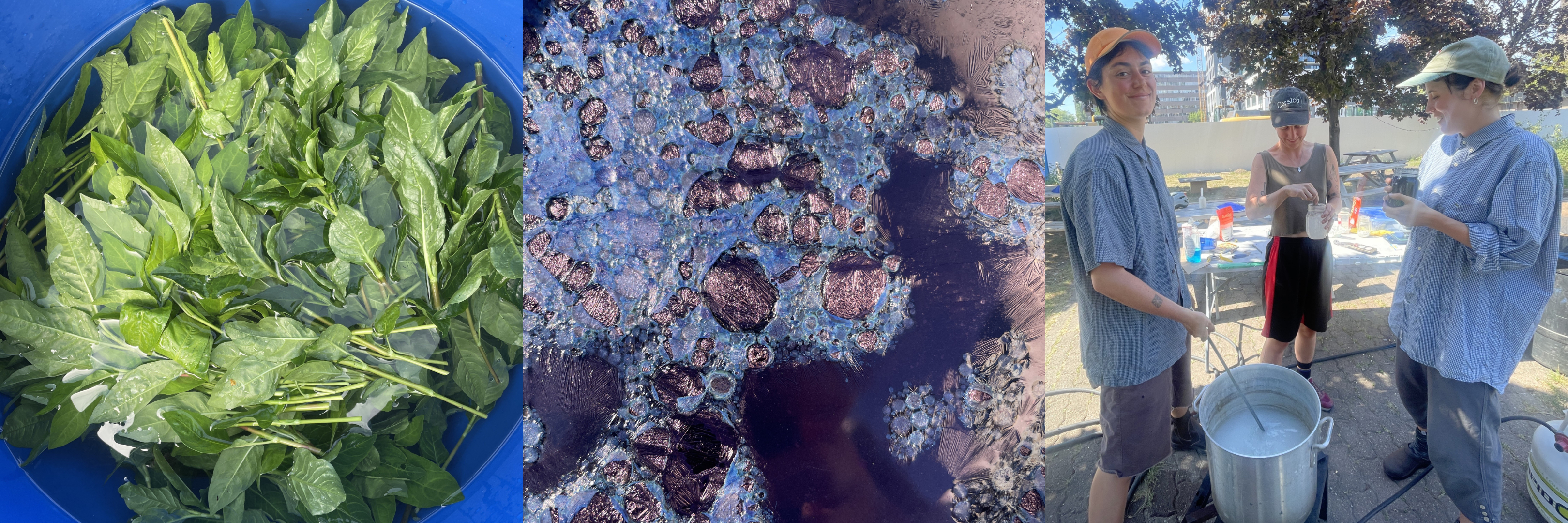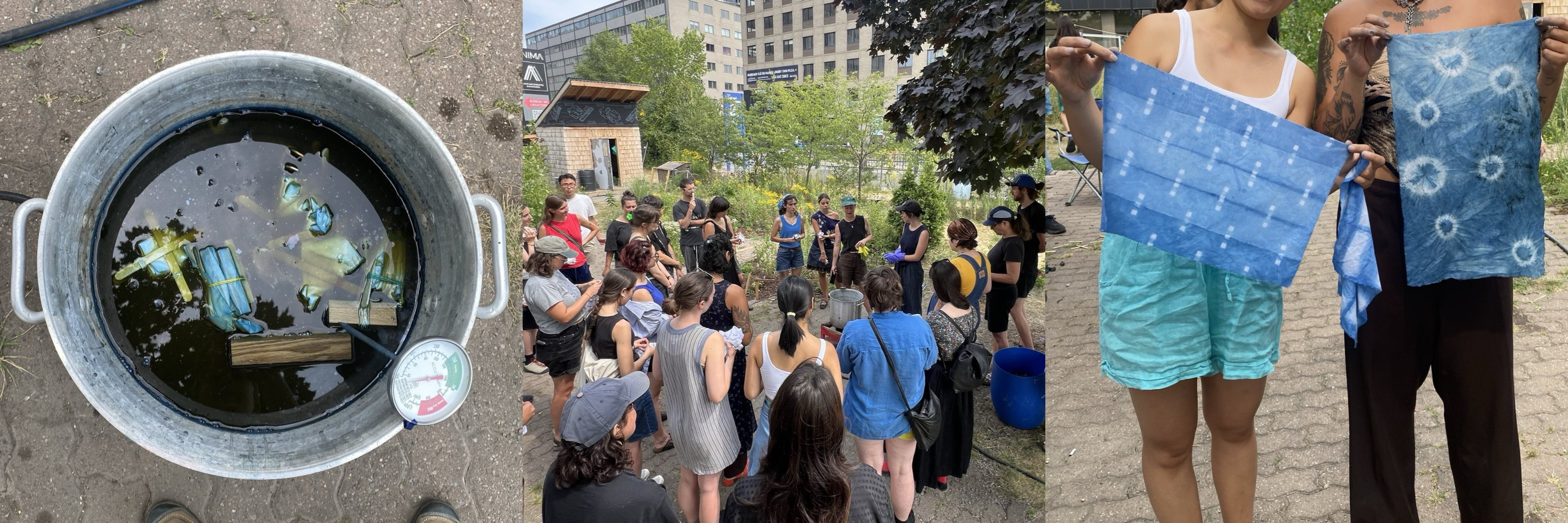Indigo!

We started the Indigo seeds (Persicaria tinctoria, Chijimbia and Grand Prismatic varieties) in mid-Februrary. In July, we harvested and fermented the leaves for a few days, and then alkalized and oxidized the fermented liquid to extract indigo pigment. We then washed the pigment and strained it through coffee filters to dry it. This dried pigment is shelf stable and can be used to make paints and inks, as well as an indigo vat for dyeing.

To make the vat, we combined our pigment with fructose (a reducing agent) and more calcium hydroxide. Once the vat is ready fabric can be dyed in it. Indigo works best with protein fibres like silk, but cotton works good as well. It is a unique dye in that you do not need to mordant cotton beforehand, just scour it. We ran an indigo workshop at Dye Jardin Papillon (see below) explaining the whole process while also giving people the oppourtunity to learn some simple shibori techniques.


dye jardin papillon
located in montreals chabanel neighbourhood, jardin papillons mission is to transform an underutilized urban space (an empty lot slated for eventual development) into an ephemeral, vibrant hub where art, ecology and community converge. its core activities include craft workshops, outdoor art exhibitions, bi-weekly film screenings and educational programming with local schools.
i was able to secure some grant money to help grow the garden and facilitate workshops at jardin papillon for the 2025 growing season alongside friends and artists nick howe and abby maxwell
peruse the garden's instagram and substack




